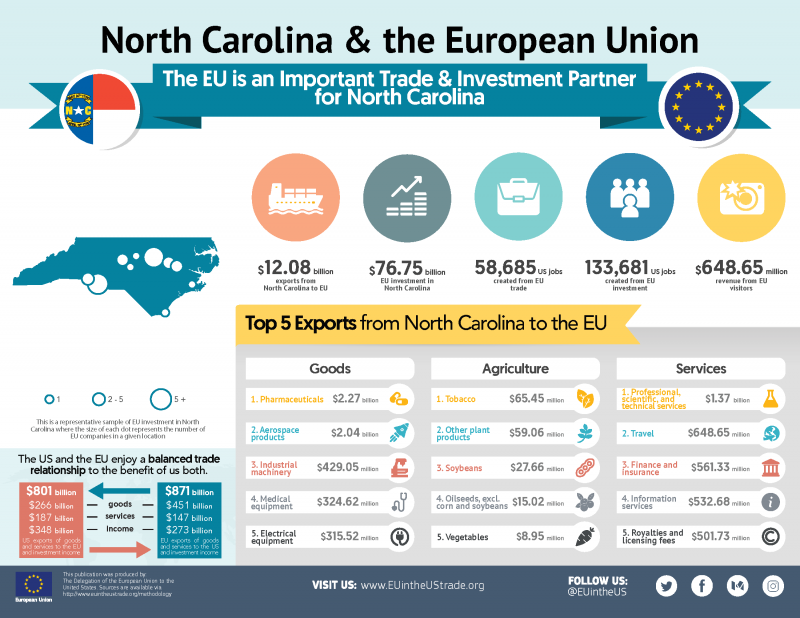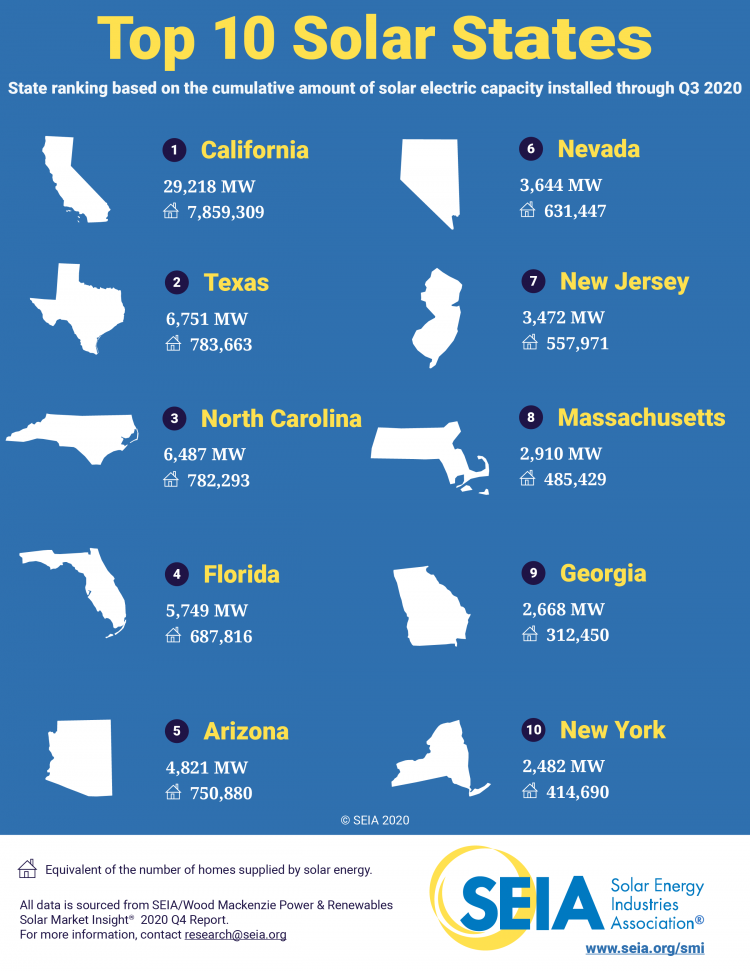Chapter 4: EU-US Relations
The second World War reshaped international affairs. The rise of the USSR and Iron Curtain between East and West Europe resulted in divided allegiances across Europe. Western European countries, which in the years immediately after the war began forging an economic union in the European Coal and Steel Community, have been strong allies of the United States. They have cooperated on a range of important issues including economic recovery and defense. Eastern European countries that are now parts of the European Union were closely linked to the USSR, and several were not independent states. The post war era is one characterized by the buildup of international organizations to foster cooperation, stability, and peace. NATO served as the primary mechanism for coordination on defense. On the economic front, the WTO and its forerunner, the General Agreement on Tariffs and Trade, or GATT, of 1947 was an agreement seeking to regulate and ease trade between countries. Today, American – EU relations are built on more than 75 years of peace, stability, and economic growth that came about through cooperation.
Key Points
- The EU and the US represent the oldest liberal democracies in the world
- The European and American definition of democracy includes freedom of press and speech and respect for human and minority rights.
The United States and Europe are some of the oldest democracies in the world. One of the European Union’s primary values is for liberal democracy, including respect for human and minority rights and freedom of information and speech. The Treaty of Lisbon (2009) laid out European citizens’ universal rights to human dignity and life, as well as social, political, and economic rights, much in the same way the American Constitution and Declaration of Independence set forth a set of values that include freedom and democracy. Both the United States and Europe support worldwide initiatives for democracy, respect for human rights, and freedom of the press and information. The European Union played an important role in helping countries like Spain, Italy, Greece, and the former Soviet-bloc countries that are now EU members, democratize and develop functioning market economies.
- The EU and the US are some of each others’ largest trading partners
- The economic impact of the EU on North Carolina’s economy is large: EU trade sustains about 60,000 jobs in the state alone.
- The European Union operates as a single entity on behalf of its members whenever it negotiates with its trading partners.
As two of the largest economies in the world, the European Union and United States are large trading partners and their economies are increasingly intertwined. You can check out the detailed statistics of EU trade with the US here. North Carolina’s top exports to the EU include pharmaceuticals, aerospace products and agricultural goods like tobacco and soybeans. As of 2020, European Union investors have over 75 billion dollars invested in North Carolina and EU trade sustains nearly 60,000 jobs in North Carolina.

Multi-national corporations like Facebook and Google have branches overseas, while European companies (like Bayer, a pharmaceutical company) do the same in the US. The map below shows the number of European companies with a significant investment in different parts of North Carolina. For example, Bayer, the German pharmaceutical company, has a significant presence in the Research Triangle Park. Moreover, supply chains for products are global, potentially crossing borders multiple before a finished product is shipped to a customer. Let’s now take a look at global supply chains in aircraft and car manufacturing:
Trade Policy of the European Union
As we discussed in the previous sections, the European Union in some ways resembles a country, and in other ways is more like an international organization. On the issue of trade, the EU acts as a country. The European Union negotiates with trading partners as a collective group of nations with a single voice. This means that non-EU countries seeking to trade with the EU no longer negotiate with Poland, Romania, and Portugal separately, but with the entire group of 27 countries. This is in part because of the European single market for goods, services, labor (people), and money. Because there are no internal borders and tariffs when goods move between EU countries, there needed to be common agreements on the quantity and price of goods entering the EU. The European Union has a diplomatic wing, which includes a Trade Commissioner, who negotiates on behalf of all member states with the United States, Japan, or any other non-EU country. This increases the European Union’s bargaining power in negotiations, because it can leverage the economic strength of all countries.
- Major European car and aircraft manufacturers have set up facilities in the American southeast, and brought with apprenticeships, which is a commonly used worker training method in Europe.
Germany, the EU’s largest economy, is well known for its car production – Audi, BMW, Mercedes, and VW all call Germany home. While there are plants for many of these cars in Europe, it’s often easier and cheaper to produce these cars where they will be sold, rather than shipping finished products across the ocean. If the final assembly for expensive products takes place in the United States, then they are not subject to the same import tariffs cars that enter the US completed are. As a result, in recent years several car manufacturers have set up shop in the Southeast for its lower cost of labor and access to the American car market. BMW has a plant in Greer, South Carolina, Mercedes in Vance, Alabama, and Volkswagen in Chattanooga, Tennessee. The Swedish car manufacturer, Volvo, also has a plant in Berkeley County, South Carolina. These European companies employ thousands of American workers and draw on supply chains for products from around the world to produce these well-known cars in the United States. These companies have also partnered with local educational institutions to mimic the apprenticeship programs car manufacturers use in Europe, which combines practical training on the job with a matching theoretical component in the classroom.

Have you ever flown in a plane? If you’ve ever flown, chances are some part of that plane has been produced in Europe, even if it’s built by an American manufacturer. Both Boeing (the American) and Airbus (the European multinational) manufacturer produce a range of airplanes, but the parts for these airplanes are developed and produced around the world. In 2015, Airbus opened a plant in Mobile, Alabama to produce its short-range aircraft, which are then sold to American and other airlines. For example, the infographic for Boeing’s new long-range aircraft, the 787 Dreamliner, shows parts that come from several European Union countries, including France, Sweden, and Italy, even though it is produced in Charleston, South Carolina and Seattle, Washington. Airbus’ short-range A320, many of which are now produced in Mobile, contain parts from the UK, Germany, France, and Italy that are shipped to and assembled in Alabama.

- The EU and the US are turning to solar energy as a renewable energy source. In Europe, Germany and the UK are the largest producers of solar energy.
Renewable energies are an important way to decrease reliance on fossil fuels and generate power with a smaller carbon footprint. Solar power is one way to do this and is a part of the European Union’s plan for climate change. It is one of the fastest growing renewable energy sources. Solar power usually captures energy through photovoltaic cells, which are usually installed on south-facing rooftops or in fields, and then feed that energy into the electricity grid. Production is dependent on weather conditions, for example when it is cloudy, which reduces but does not eliminate energy production. It is also seasonal – because Europe is at such a high latitude, summers can have up to 18 hours of sunlight a day, while winters have less than 8 or 9 daylight hours. But in some parts of Europe and the United States where sunshine is plentiful, solar energy is promising – for example in Portugal, Spain, Greece, and Italy, all of which have Mediterranean climates and a more even seasonal distribution of daylight.
Who are the largest producers? In the United States, California and Texas are the largest producers, though North Carolina is the third largest producer in the U.S. In Europe, one might think sunny Spain or Portugal are the largest producers, but Germany actually produces more than double the energy of the second largest European producer – Italy. Cloudy and rainy Great Britain comes in third in the EU.

Germany is shaping up to be a pioneer in renewable energy, even beyond solar. In 2019, it has committed 60 billion euros towards combatting climate change, much of which will come from reducing the country’s carbon footprint. While corporations have invested in solar technology, a significant amount of solar energy comes from private households. About 1.5 million households (in a country of 80 million) have installed panels. In order to incentivize the production and installation of solar panels, Germans were paid when they put money into the electricity grid. In the early days of solar in the 1990s and 2000s, subsidies to ensure a higher price for solar energy were given, but even as those have been slashed in recent years, solar has remained popular among homeowners. In the U.S., a 2006 federal law introduced a 30 percent tax credit for residential and solar investments, which is to be phased out in 2021. Some states – North Carolina included – have introduced similar incentives.
How to teach this section
Discussion Questions
- What do American and European economies have in common? How are they different?
- Why do the EU and US have such a close relationship?
- What are common European and American values?
Suggested Lesson Plans
High School & Community College
Understanding EU-US Relations for AP US History Students understand how the US and the EU are alike and different, and how EU policies today can help shape its policies based on the success/failure of those policies (AP US History).
Learn about EU and US Communication Styles (High School & Community College) Students investigate cultural difference between the EU and US (Communication).
Comparing editorial cartoons about the EU and the US Relations (High School & Community College) Students investigate how the US and EU are portrayed in editorial cartoons (Humanities).
